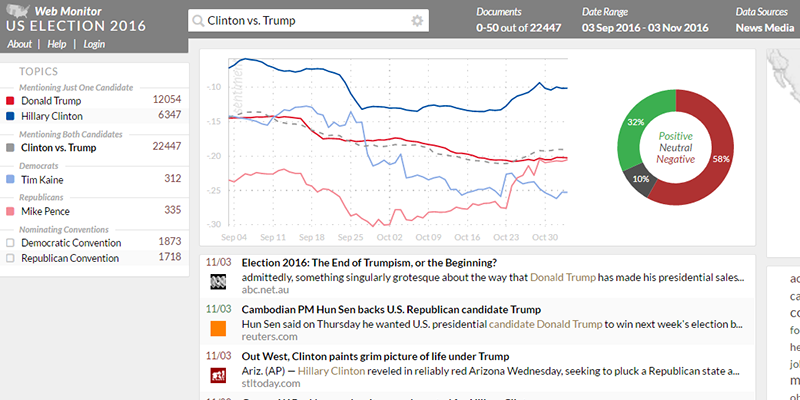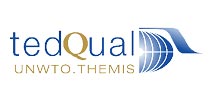Clinton vs. Trump – The Virtual Showdown
November 03, 2016
After several October surprises, the US Presidential Elections are just a few days away. A novel Web Intelligence platform to track current trends in online coverage of the presidential campaigns, developed by a team of European researchers lead by MODUL University Vienna, offers insights how recent events affect news and social media coverage. The system uses the webLyzard Web intelligence platform to compare the perceptions of Twitter users with the editorial positions of the news media, to identify opinion leaders, and to reveal the geographic focus of the online coverage.
Like no other US Presidential Election in recent history, the race Clinton vs. Trump polarizes the electorate and the resulting online coverage. The key role of social media is not novel, yet in the current election cycle even the Twitter postings of the candidates themselves became key moments that would shape the public debate for days and weeks. While August polls suggested a close race, Hillary Clinton has been able to build up a lead over the Republican candidate Donald Trump since the first televised Presidential debates. In the final days of these unusual presidential campaigns, however, surprises from both sides keep fueling the online discussions. How have recent events influenced the online coverage and stakeholder communication via social media? The US Election 2016 Web Monitor, publicly available at http://us2016.weblyzard.com, provides answers to these questions.
Online Trends and Public Opinion
The system analyzes more than 25 million new documents each month, to answer questions such as: Who is reporting about or commenting on the parties and candidates, and how often? Which topics are associated with the candidates? Are user comments largely positive or negative? Are there trends or regional patterns in the candidates’ popularity? How do breaking news influence the debate?
Project spokesperson, Prof. Arno Scharl from MODUL University Vienna’s Department of New Media Technology, outlines how the interactive Web application gives a unique view of the diverging perceptions of different stakeholder groups. “There have been many attempts at monitoring the campaign performance of presidential candidates, but most of them focus on public opinion polls or media monitoring solutions limited to simple statistical representations”, he said. “Our Web intelligence platform, by contrast, extracts knowledge automatically and offers visual data exploration along multiple context dimensions, in real time and embedded into a powerful dashboard.” The dashboard was also showcased in a recent TEDx talk, illustrating how visual tools such as geographic maps and keyword graphs can reveal patterns and connections in the gathered content.
State-of-the-Art Web Intelligence Platform
The US Election 2016 Web Monitor is jointly pursued by researchers of MODUL University Vienna, webLyzard technology, the Vienna University of Economics and Business, and HTW Chur in Switzerland, who have a long history of successful collaboration. Its predecessor, a monitoring application for the US Election 2008, won the “Online Communities, Web 2.0 & Social Networks” category of the Austrian National Award for Multimedia and e-Business. The underlying webLyzard Web Intelligence platform is continously extended within the context of major EU research projects in the 7th Framework and H2020 Programs including DecarboNet, Pheme, ASAP, and InVID.
Election Monitor: us2016.weblyzard.com
Image Resources: www.modul.ac.at/nmt/media-resources





